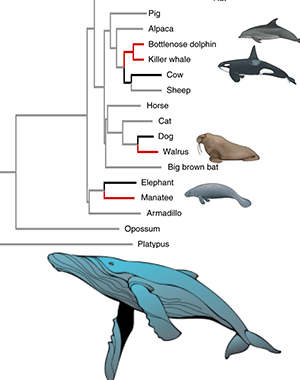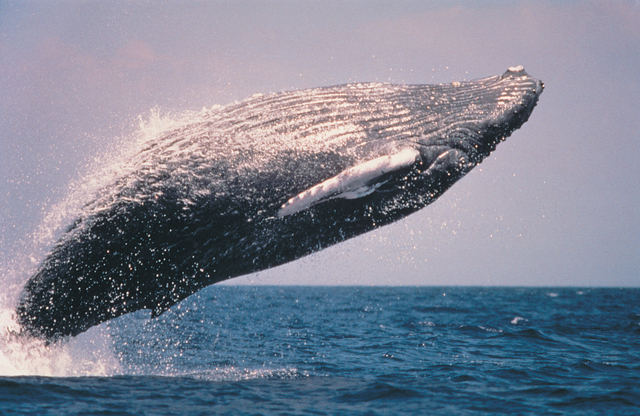
I recently shifted the evolution unit to second semester, to be taught after the genetics unit. I think there’s a natural transition from genetics into evolution in the AP Biology classes. The concept of “change over time” becomes much more rigorous when students can explore how those changes occur on a molecular level.
First year biology use the VIDA model to understand the process of evolution. It’s probably a good idea to refresh student memory on the basics before diving into genetics and phylogeny. Recall that VIDA means: variation, inheritance, differential survival, and adaptation. The focus for freshman students is usually on the differential survival aspect, with examining what traits provide an advantage, like with the rock pocket mouse activity. I may mention mutations as a way for species to change, but it’s not the main idea for beginning students.
Lessons from Whales
In this activity, a phylogenetic tree indicates where nonsynonymous mutations occur in aquatic mammals. The information is found in a Nature article (primary source). Of course, you could have students read the entire article, but I think it’s a little much for what I want students to learn. I focus mainly on the phylogeny and how mutations can indicate where change has occurred on the branches. In the image, you can see that the red lines indicate where mutations have occurred in different lineages. The whale and dolphin mutations probably originated in an ancestral species, but the walrus and manatee mutations arose independently. Why? Convergent evolution!

To start, the introductory page explains what a nonsynonymous mutation is and why it would be an indicator of evolution. Students use a codon chart to identify different types of mutations. Unfortunately, the original article does not specifically state what the mutation is, or why it might be found in aquatic mammals. (Though the author does suggest some possibilities.) Alternatively, students can discuss their own ideas about what types of mutations might be found in the mammals. These mutations might include things like blubber, or improved oxygen exchange.
I think that students might find this activity challenging. They will really need to think about the implications of the tree and and why mutations might arise independently. It might be best to have students work in small groups to answer the questions. Then, at the end of class, you can discuss their answers and they can check their own work. Ideally, students will have a basic understanding of evolution from first year biology. The Berkeley Evolution site also has some great resources on whale evolution if you wanted to explore further.
A special thanks to Alice Hubbard for creating an easier version of this activity for beginning students which includes a VIDA chart and simplifies the descriptions of the mutations.

